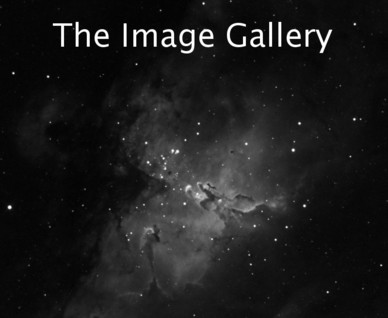CCD Camera - SBIG STT-8300M, FW8G Self Guided filter wheel and Adaptive Optics
This is one of the best times to be an amateur astronomer due the vast expansion of affordable equipment available to those interested in this hobby! Just a few years ago ANY CCD camera worth using was well over $5,000; today, you can purchase a much higher quality imager with a color filter wheel for around $6,000!
My camera of choice to match the capability of my TEC 140mm refractor is the SBIG STT-8300M. The 8300 is no ordinary camera since it uses the telescope as the camera lens and it can only create color images by combining images taken through Red, Green and Blue filters. I also have a Self-Guided filterwheel with a Hydrogen Alpha (for imaging nebulae) and Luminance filter in addition to the color filters
From the SBIG website: "The STT 8300M represents the culmination of everything that the amateur has asked for in an imaging system, packed into a 4.9 x 4.9 x 2.9 inch body. Standard features include: Two-stage cooling with a temperature delta greater than -50C with air only; water cooling ready; USB 2.0 and Ethernet on every camera; full frame buffer; fast low-noise readout of an 8.3Mp CCD in less than one second; MAR coated sapphire chamber window; self-guiding in front of the filters; remote guide head support; optional adaptive optics; and more..”
A couple of things I had to do to set my camera up: I added the optional self-guiding filter wheel and adaptive optics that fit in front of the filters and eliminates the need for a second telescope to guide the telescope. The adaptive optics allow for very sharp images and uses a precision optical lens and pivots to eliminate vibrations and atmospheric disturbances.
The filter wheel that attaches to the STT-8300 accepts 36mm filters and allows me to create color images as well as capture the faint details of light given off from the Hydrogen Alpha spectrum of light. I chose Astrodon Generation II filters which came with a hefty price tag but are worth every penny! My Hydrogen Alpha filter is also an Astrodon product and is a 5 nanometer filter which ran about $10 per mm!
My advice? Yes, SBIG cameras and the accessories to create impressive images can be expensive, but not so much so that you should deprive yourself of the quality these cameras offer. Consider this; SBIG cameras have electromechanical shutters, do not have column defects, frequently have self-guiding chips within the camera (no need for an additional camera to guide), very low thermal noise, wide field images, an electric cooling fan and the ability achieve -50ºC cooling resulting in a superior quality camera.
Think about this: Take a look at Astronomy or Sky & Telescope magazines and notice that the images in the reader pictures section are frequently taken with SBIG cameras. It's not popularity or prevalence that makes SBIG cameras number one for amateur photos in astronomy magazines, its quality of the cameras and images plain and simple.

















